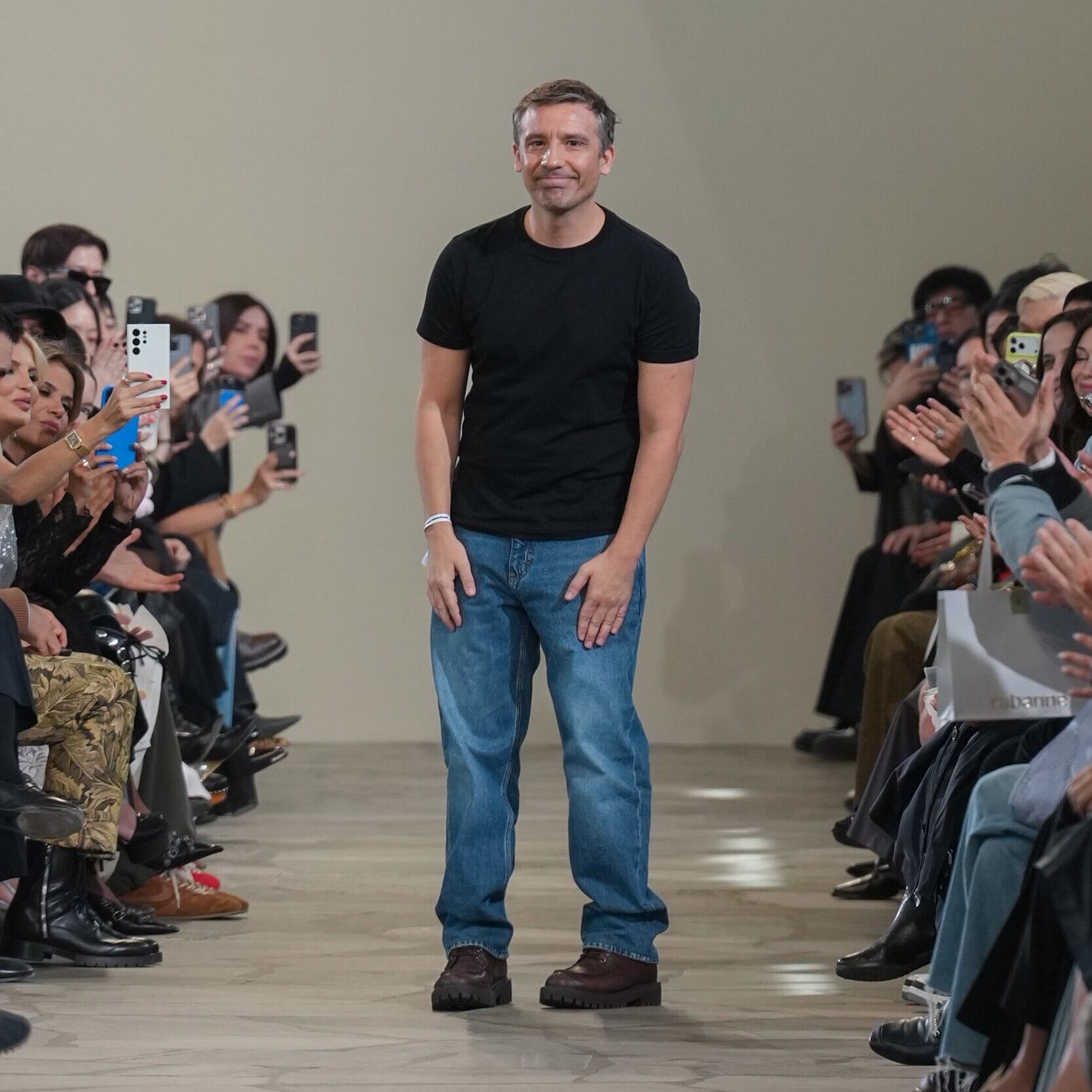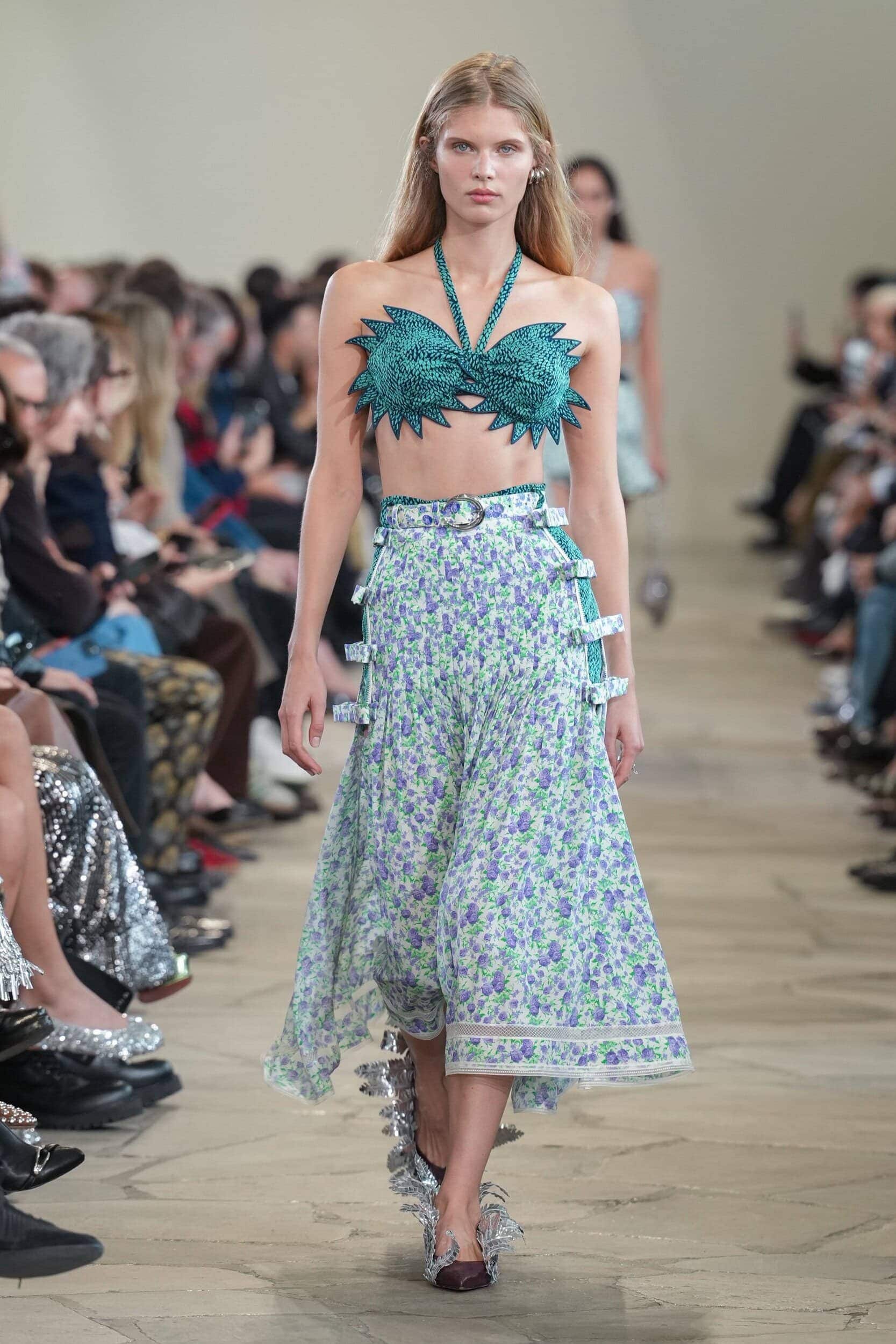From Poolside Sorbets To Scuba Boyfriends, Julien Dossena Balances Optimism And Tension In His Spring 2026 Vision For Rabanne
By Kenneth Richard

Julien Dossena greeted me with a smile, dressed simply in jeans and a black tee, looking refreshed after summer yet fully immersed in the architecture of his craft. He speaks with his hands, warm and animated, as though his enthusiasm might spill across the table. Seasoned from a decade at the helm of Rabanne, he still approaches his work with a playful sense of discovery—evident in the Spring 2026 collection he had just unveiled in Paris.
“Actually, at first I discovered these swimming costumes from the ’50s and ’40s—they were like dresses—and I found it super, super interesting, that kind of performative clothes for leisure,” he explained, his hands sketching invisible shapes.
So how to explode that, you know? It was all those ’50s references by the pool, a little bit bubbly, the colors, a bit Miami Design District. And then you beat it with a car crash, like you cut a dress from the ’60s—a little Rosemary’s Baby—and then explode it by the volume.”
The result was a collection that swayed between lightness and storm, leisure and tension. Skirts ripped open to reveal swimwear beneath, tied like sarongs with gestures he recalled from summers by the sea in Brittany, where he grew up. “It’s always a sensation of lifestyle that I love to observe,” he said, smiling at the memory. From there, his silhouettes spun outward into characters—playful, trippy, sunglasses large enough to recall both scuba divers and 1960s futurists. “I really wanted to have fun with that notion of femininity,” he said, “to radicalize it a little bit.”

Colors came in candy tones—sorbets left a little longer in the sun, faded baby blues, pale sunshine yellow, ivory. “As if they’ve been scorched just enough,” he said, describing fabrics that shimmered like poolside tiles. The corsetry, rendered in leather, revealed his precision: a mix of athleticism and sculptural grace.

For Dossena, optimism doesn’t arrive without shadow. “There’s a balance with tension,” he noted, pointing to shiny neoprene with dark Hawaiian florals. “It’s not poisonous, but a bit darker, let’s say. Which I found interesting.” Even his “scuba boyfriends”—characters surfacing in both men’s and women’s looks—arrived tinged with that same blend of fun and friction. “Maybe one you encounter during holiday, you know, that makes an impression,” he laughed.
Such tensions feel intrinsic to Rabanne itself. The house, born from Paco Rabanne’s radical experiments with metal and material in the 1960s, has always carried both lightness and defiance. Since 2013, Dossena has carried that legacy forward. A graduate of La Cambre in Brussels, he first made his mark at Balenciaga under Nicolas Ghesquière, later founding his own short-lived line Atto, before being named Creative Director of Rabanne. His résumé spans some of the most formative ateliers of modern fashion, but it is here that he has found his stride, evolving the house from futuristic armor into something both wearable and wondrous.
“In Paco Rabanne, the point is always to experiment,” he said. “To search for new possibilities of working metal, of working volumes, of exploding the codes.”
And with this collection, Dossena did just that—exploding codes while letting sunlight and storm clouds mingle on the runway. In an era where fashion often leans into irony or cynicism, his vision of leisure as radical optimism felt like a welcome counterpoint. Poolside dreams, in his hands, are not just escapism; they’re a reminder that glamour, even tinged with tension, can still uplift.



